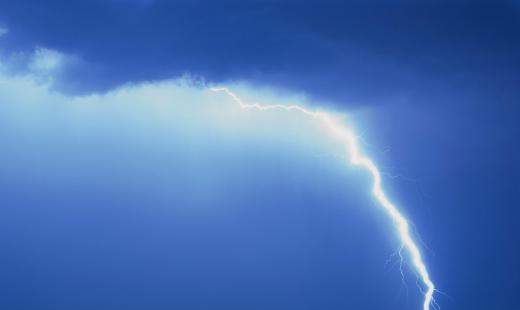A ring ground is a type of electrical ground in the form of a partially exposed, heavy gauge wire, usually made of copper, that encircles a building or other structure in a continuous ring, for the purpose of providing a common ground for all electrical systems. A ring ground can also be part of a lightning protection system and is used for dissipating electricity from direct lightning strikes on lightning rods, which are connected to the ring ground by heavy gauge copper wire. The term can also sometimes be used to refer to a similar type of grounding apparatus called a halo ring ground which is a ring of wire suspended from the ceiling of a room for the purpose of serving as a connection point for ground wires for electrical equipment or devices.
Grounding of electrical systems is an important technique for reducing risk of electric shock or damage due to lightning strikes. If electric insulation fails in some part of a system or electric device, the electric ground will allow current to be dissipated into the earth instead of electrifying the structure or the device itself. In most developed parts of the world, electric grounds are required for power delivery systems in all buildings, including residences. A ring ground is one form of such a ground, and in the United States, is the standard set by law in building codes.

The standard size wire for a ring ground is a number 2 gauge copper wire, which is a heavy gauge wire. It may be solid or made up of strands, and will encircle the entire structure around which it is installed. It is common for large portions of the wire, at various points along its length, to be stripped bare of all insulating material to ensure good contact with the earth. Number 2 gauge wire is approximately 0.25 inches (6.54 mm) thick. The wire must be buried at least 2.5 feet (75 cm) underground and outside the dripline to help reduce corrosion.

This type of ground is common around structures like communications, radio, and cell phone towers as well as other structures prone to being struck by lightning. Equipment buildings and other structures with sensitive equipment, such as computer depots and data banks, are often protected by ring grounds as well. A halo ring ground is sometimes found in such structures, which is connected to an outside earth ground assembly, usually a grid or series of steel or copper bars.
